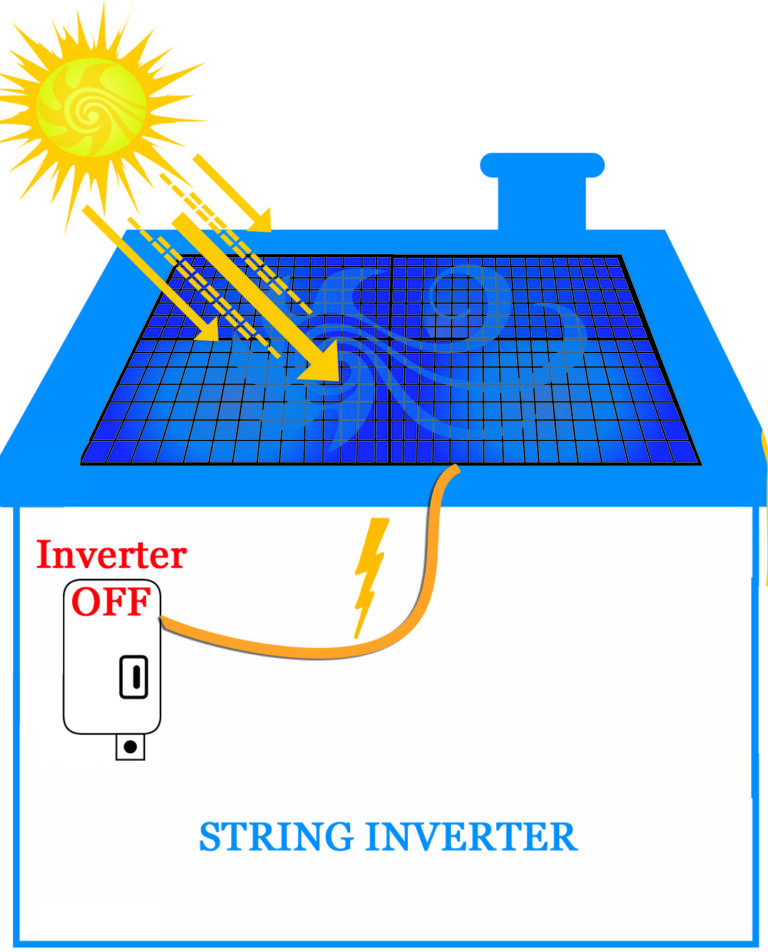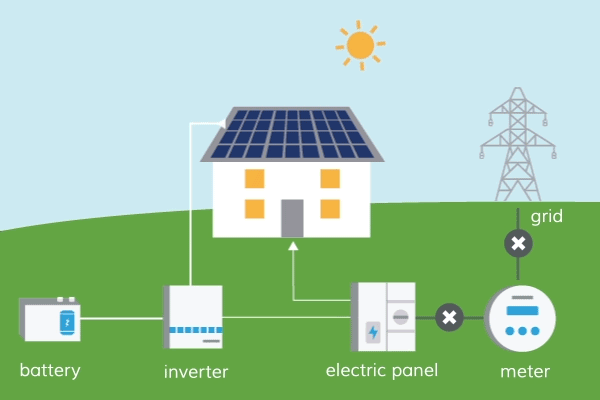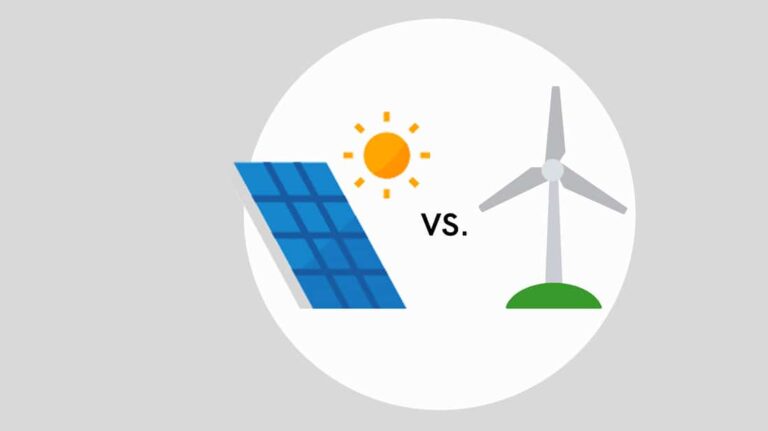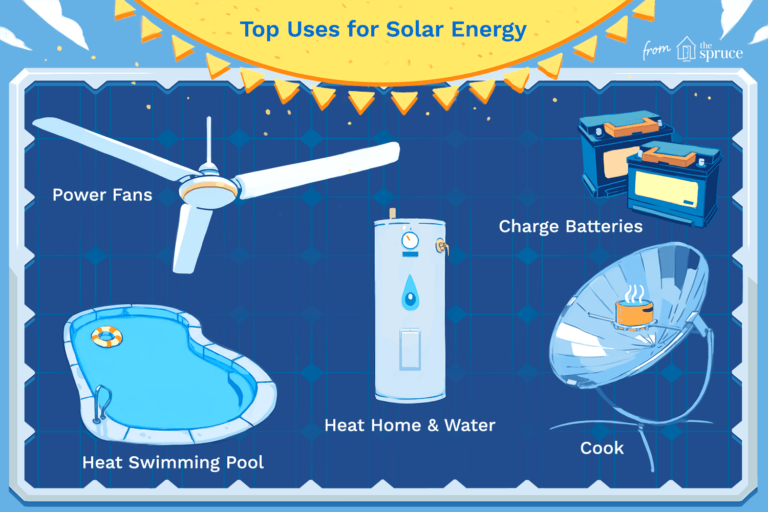How Does Photosynthesis Use Solar Energy?
Welcome to the fascinating world of photosynthesis! Have you ever wondered how plants harness the power of the sun to create energy? Well, get ready to uncover the secrets of how photosynthesis uses solar energy in this exciting journey.
In photosynthesis, plants have a superpower that allows them to convert sunlight into something they can use: glucose, a type of sugar that serves as their fuel. But how do they do it? It’s like having a solar panel right inside their leaves!
So, how exactly does photosynthesis use solar energy to create this life-sustaining fuel? Buckle up and prepare to be amazed by the incredible process that powers the entire plant kingdom. Let’s dive in and explore the magic of photosynthesis together!
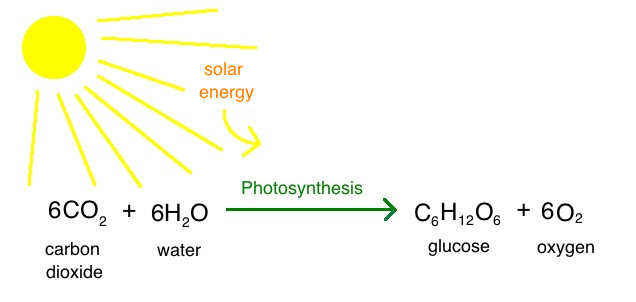
The Power of Photosynthesis: How Does It Use Solar Energy?
Photosynthesis is a fascinating process by which plants, algae, and some bacteria convert solar energy into chemical energy. It is a fundamental process in the biosphere that not only sustains life on Earth but also plays a crucial role in maintaining the balance of atmospheric gases. This article will delve into the intricacies of photosynthesis, exploring how it harnesses the power of the sun and transforms it into the essential building blocks of life.
Understanding the Sun’s Role in Photosynthesis
Photosynthesis is the remarkable process that allows green plants and other photosynthetic organisms to convert light energy from the sun into chemical energy stored in the bonds of glucose and other organic compounds. This conversion is made possible by specialized structures within the cells called chloroplasts, which contain the pigment chlorophyll. When sunlight hits these pigments, they absorb the energy and initiate the complex reactions that ultimately produce glucose. Let’s take a closer look at how photosynthesis unfolds step by step.
Step 1: Capturing Solar Energy with Chlorophyll
The first crucial step in photosynthesis is the absorption of light energy by chlorophyll and other accessory pigments. Chloroplasts are filled with an abundance of these pigments, which allow plants to capture energy from the entire visible light spectrum. However, chlorophyll A and chlorophyll B are the primary pigments responsible for most light absorption. These pigments are able to absorb light primarily in the blue and red regions of the spectrum, while reflecting or transmitting green light, giving plants their characteristic color.
As the photons of light are absorbed by chlorophyll, their energy excites electrons within the pigment molecules, elevating them to a higher energy state and initiating the energy conversion process. This energy is then transferred to special reaction centers within the chloroplasts called Photosystem I and Photosystem II, where the real magic of photosynthesis begins.
Step 2: Converting Light Energy to Chemical Energy
Once the photons of light are absorbed by chlorophyll and the energy has been transferred to the reaction centers, the process of converting light energy to chemical energy can commence. This second step occurs within the thylakoid membranes of the chloroplasts. Here, the energy from the excited electrons is used to generate adenosine triphosphate (ATP) and reduced nicotinamide adenine dinucleotide phosphate (NADPH).
The process responsible for generating ATP is called photophosphorylation. It harnesses the energy of excited electrons to pump hydrogen ions across the thylakoid membrane, building up a concentration gradient. These ions then flow back across the membrane through ATP synthase, a molecular machine that converts this flow into the formation of ATP. NADPH is formed through a similar process but with a different set of molecules and enzymes.
Step 3: Synthesizing Glucose Through the Calvin Cycle
The final stage of photosynthesis is the synthesis of glucose through a series of reactions collectively known as the Calvin cycle (or C3 pathway). Unlike the previous steps, which occur in the thylakoid membranes, the Calvin cycle takes place in the stroma, the fluid-filled space within the chloroplasts.
The Calvin cycle uses the ATP and NADPH produced in the previous steps to convert carbon dioxide (CO2) into glucose. This complex process involves a series of chemical reactions and enzyme-catalyzed steps, which ultimately result in the formation of glucose, a sugar molecule rich in stored energy. The glucose produced through the Calvin cycle serves as the primary fuel source for cellular respiration and is also used as a building material for various plant structures.
Key Takeaways: How Does Photosynthesis Use Solar Energy?
Photosynthesis is the process by which plants use solar energy to convert carbon dioxide and water into glucose and oxygen.
Plants have a pigment called chlorophyll that absorbs sunlight to start the photosynthesis process.
During photosynthesis, plants take in carbon dioxide from the air and release oxygen as a byproduct.
The energy from the sun is used to power the chemical reactions in photosynthesis, allowing plants to grow and produce food.
Photosynthesis not only helps plants make food but also contributes to the oxygen production and the balance of gases in our atmosphere.
Frequently Asked Questions
Photosynthesis is a fascinating process through which plants convert sunlight into energy. Below, you’ll find answers to some common questions about how this incredible process uses solar energy:
How do plants capture solar energy during photosynthesis?
Plants capture solar energy through specialized cell structures called chloroplasts, which contain a pigment called chlorophyll. Chlorophyll absorbs sunlight, particularly in the red and blue regions of the light spectrum. This captured solar energy is then converted into chemical energy during the process of photosynthesis.
During photosynthesis, carbon dioxide from the air, water from the roots, and solar energy absorbed by chlorophyll work together to produce glucose, which serves as a form of stored energy for the plant. The transformation of solar energy into chemical energy is essential for the survival and growth of plants.
Why is solar energy important for photosynthesis?
Solar energy is crucial for photosynthesis because it is the primary source of energy that drives the process. Without sunlight, plants would not be able to convert carbon dioxide and water into glucose, which is necessary for their growth and survival. Solar energy provides the power needed to break down water molecules into hydrogen and oxygen, and ultimately fuel the synthesis of glucose.
In addition to fueling the production of glucose, solar energy also plays a vital role in maintaining a balanced ecosystem. Photosynthesis releases oxygen into the atmosphere, which is essential for the survival of other living organisms, including animals and humans. It is thanks to solar energy that plants can produce food and oxygen, making life on Earth possible.
Do all plants use solar energy for photosynthesis?
Yes, all plants use solar energy for photosynthesis. Photosynthesis is a fundamental process in the plant kingdom, and it is the primary method by which plants convert solar energy into chemical energy. Even plants that grow in shady areas or low-light environments still need some level of solar energy to carry out photosynthesis, although they may require less compared to plants in direct sunlight.
In fact, plants have evolved various mechanisms to optimize their use of solar energy. Some plants, for example, have leaves that can adjust their angle or orientation to capture the maximum amount of sunlight available. Others have adapted to different light conditions by altering the efficiency of their chlorophyll or changing their leaf color to absorb specific wavelengths of light more effectively.
Can photosynthesis occur without solar energy?
No, photosynthesis cannot occur without solar energy. Solar energy is the driving force behind photosynthesis, providing the necessary energy to fuel the chemical reactions that convert carbon dioxide and water into glucose. Without solar energy, plants would not have the energy required to produce food and perform vital functions necessary for their survival.
It’s important to note that certain organisms, such as chemosynthetic bacteria, are capable of obtaining energy from sources other than sunlight. However, these organisms do not undergo photosynthesis in the same way plants do and rely on alternative mechanisms to produce energy. For the majority of plants, solar energy is essential for the process of photosynthesis.
How does photosynthesis contribute to the ecosystem’s energy flow?
Photosynthesis forms the foundation of the ecosystem’s energy flow. By converting solar energy into chemical energy stored in glucose, photosynthesis provides the energy source for all other organisms within the food chain or food web. In this process, primary producers, such as plants and algae, create organic compounds that serve as food for herbivores.
When herbivores consume plants, they acquire the stored energy from photosynthesis, allowing them to grow and thrive. The herbivores, in turn, become a food source for carnivores, which acquire the energy stored in the herbivores’ bodies. This energy transfer continues throughout the food chain, ultimately sustaining the entire ecosystem.
Summary
Photosynthesis is how plants make food using sunlight, water, and carbon dioxide.
When sunlight hits the leaves, it powers a special process in the plant cells called photosynthesis. During photosynthesis, the sunlight is converted into energy that the plant can use. This energy is used to combine water from the roots and carbon dioxide from the air to make glucose, which is the plant’s food. As a result, plants release oxygen into the air, which is important for all living things. So, photosynthesis is how plants use solar energy to create their own food and produce oxygen. It’s pretty amazing!

